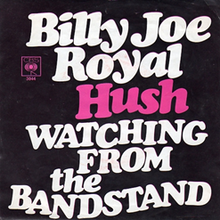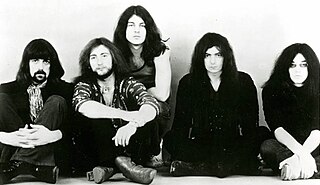
Deep Purple are an English rock band formed in London in 1968. They are considered to be among the pioneers of heavy metal and modern hard rock, although their musical style has varied throughout their career. Originally formed as a psychedelic rock and progressive rock band, they shifted to a heavier sound with their 1970 album Deep Purple in Rock. Deep Purple, together with Led Zeppelin and Black Sabbath, have been referred to as the "unholy trinity of British hard rock and heavy metal in the early to mid-seventies". They were listed in the 1975 Guinness Book of World Records as "the globe's loudest band" for a 1972 concert at London's Rainbow Theatre and have sold over 100 million albums worldwide.

"Smoke on the Water" is a song by English rock band Deep Purple, released on their 1972 studio album Machine Head. The song's lyrics are based on true events, chronicling the 1971 fire at Montreux Casino in Montreux, Switzerland. It is considered the band's signature song and the guitar riff is considered to be one of the most iconic.

Shades of Deep Purple is the debut album by the English rock band Deep Purple, released in July 1968 on Tetragrammaton in the United States and in September 1968 on Parlophone in the United Kingdom. The band, initially called Roundabout, was the idea of former Searchers drummer Chris Curtis, who recruited Jon Lord and Ritchie Blackmore before leaving the project. The Mk. I line-up of the band was completed by vocalist/frontman Rod Evans, along with bassist Nick Simper and drummer Ian Paice, in March 1968.

Deep Purple, also referred to as Deep Purple III, is the third studio album by the English rock band Deep Purple, released in June 1969 on Tetragrammaton Records in the United States and only in September 1969 on Harvest Records in the United Kingdom. Its release was preceded by the single "Emmaretta" and by a long tour in the UK, whose dates were interspersed between the album's recording sessions.

Deep Purple in Concert is a live album by the English hard rock band Deep Purple, recorded by the BBC for their "In Concert" live series in 1970 and 1972. First released in 1980 in the UK, with the current US edition being made available in 2001.

Deepest Purple: The Very Best of Deep Purple is a compilation album by the English hard rock band Deep Purple, released in 1980 on LP. It features the original hits of Deep Purple before their 1984 reunion. Aided by a TV advertising campaign it would become Purple's third UK No. 1 album. In 1984 this compilation additionally was published on CD.
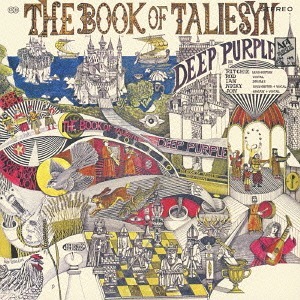
The Book of Taliesyn is the second studio album by the English rock band Deep Purple, recorded only three months after Shades of Deep Purple and released by Tetragrammaton Records in October 1968, just before their first US tour. The name for the album was taken from the 14th-century Book of Taliesin.
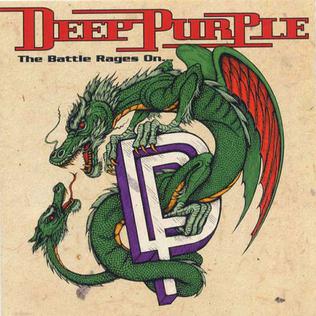
The Battle Rages On... is the fourteenth studio album by the English hard rock band Deep Purple, released on July 19, 1993 (Europe). It is the last album recorded with the band's classic Mk II line-up, which reunited for a second time.
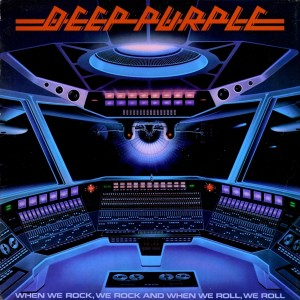
When We Rock, We Rock, and When We Roll, We Roll is a compilation album by Deep Purple featuring some of their most popular songs from 1968 to 1974.
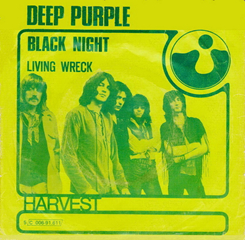
"Black Night" is a song by English hard rock band Deep Purple, released as a single in June 1970 and later included on the 25th Anniversary version of their 1970 studio album, Deep Purple in Rock. It became a hit following its release, peaking at No. 1 on UK New Musical Express, Melody Maker and Top Pops charts, and remains Deep Purple's highest charting UK single. It topped the charts in Switzerland, and is one of only two singles from the band to chart in Ireland, peaking at No. 4, thus making it the group's only Irish Top 10 hit. It was also the second non-album single penned by the band and also reached number 6 in South Africa.

The Anthology is a compilation album by the English hard rock band Deep Purple, containing material by Mks I (1968–1969), II (1969–1973), III (1973–1975) and IV (1975–1976) line-ups. It was released as a double vinyl album and double-cassette, and included a few previously unreleased tracks and mixes. The sleeve-notes were written by Chris Charlesworth, author of Deep Purple – The Illustrated Biography.

30: Very Best of Deep Purple is a 1998 compilation album by English rock band Deep Purple, celebrating 30th anniversary of the band. There are two CD versions of the album, a single CD and a double CD, and a vinyl version, a double LP printed on purple vinyl, with the track listing being identical to the single CD version.

The Deep Purple Singles A's & B's is a compilation album of singles released by the English hard rock band Deep Purple. It was released on vinyl in October 1978. An updated version of the album was issued on CD in 1993 and contains the complete collection of Deep Purple's UK singles, recorded and released from 1968 to 1976 by the Mk I, II, III and IV line-ups of Deep Purple. In 2010 EMI released another double CD compilation album called Singles & E.P. Anthology '68 – '80. It contains all songs as herein plus 15 tracks. The song "Kentucky Woman" is present in the album version, which is 38 seconds longer than the single edit.

Knocking at Your Back Door: The Best of Deep Purple in the 80's is a compilation album by the English hard rock band Deep Purple. The album was released in 1992.
Funky Junction were an Irish rock band formed in 1972 specifically to record a single album of songs made famous by British band Deep Purple, which was released as Funky Junction Play a Tribute to Deep Purple in January 1973. Among the band's lineup were all three members of the early 1970s incarnation of Thin Lizzy.

Deep Purple in Rock is the fourth studio album by English rock band Deep Purple, released on 5 June 1970. It was the first studio album recorded by the Mark II line-up of Ritchie Blackmore, Ian Gillan, Roger Glover, Jon Lord and Ian Paice.
The Deep Purple European Tour was a year-long successful concert tour by English hard rock band Deep Purple, lasting from July 1969 until June 1970. The band played mostly United Kingdom shows, also covering West Germany, Switzerland, Denmark, the Netherlands and Belgium. It was the first tour to feature the classic Deep Purple line-up: Ian Gillan, Roger Glover, Ritchie Blackmore, Jon Lord and Ian Paice. It is considered to be the pre-tour for the In Rock album, as the band mostly played songs from the upcoming album.
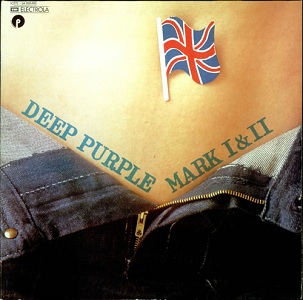
Mark I & II is a 1973 compilation album by Deep Purple, released by EMI's German subsidiary Electrola. It contains material originally released between 1968 and 1973. This double LP was released after Ian Gillan and Roger Glover had left Deep Purple in June 1973. This compilation was mainly a European release, but was also released in various overseas territories, like Australia and New Zealand.

BBC Sessions 1968–1970 is a 2011 live compilation album featuring performances by the English hard rock band Deep Purple that were recorded at the BBC's Maida Vale Studios, London, and originally broadcast on various BBC Radio shows from 1968 through 1970. BBC Sessions 1968–1970 is a two-disc set collecting all the surviving sessions in the BBC archives.
